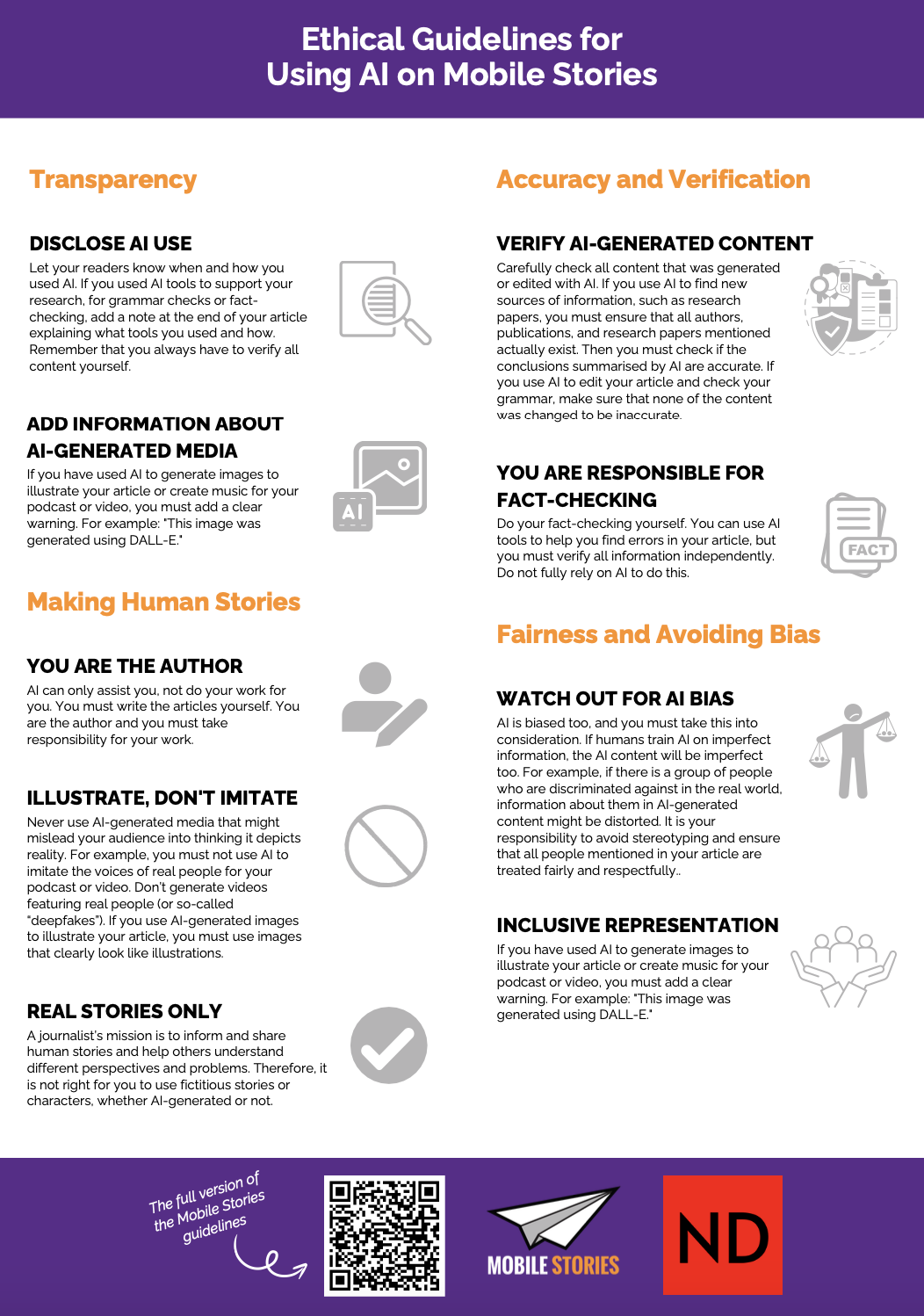Ethical Guidelines for Using AI on Mobile Stories


Transparency:
Add information about AI-generated media: If you have used AI to generate images to illustrate your article or create music for your podcast or video, you must add a clear warning. For example: “This image was generated using DALL-E.” Remember, don’t use images that look realistic and might mislead your audience into believing they depict real events.
Making Human Stories:
Real stories only: A journalist’s mission is to inform and share human stories and help others understand different perspectives and problems. Therefore, it is not right for you to use fictitious stories or characters, whether AI-generated or not. The use of AI should not conflict with the Young Reporter´s Code of Ethics.
Illustrate, don’t imitate: Never use AI-generated media that might mislead your audience into thinking it depicts reality. For example, you must not use AI to imitate the voices of real people for your podcast or video. Don’t generate videos featuring real people (or so-called “deepfakes”). If you use AI-generated images to illustrate your article, you must use images that clearly look like illustrations. AI-generated images can lead to confusion over what is fiction and what is reality and can even cause panic in sensitive situations like conflicts, wars or natural disasters. To maintain trust and transparency, never use portraits that do not represent real individuals. You cannot add AI-generated elements to real images. That is called manipulation.
Accuracy and Verification:
You are responsible for fact-checking: Do your fact-checking yourself. You can use AI tools to help you find errors in your article, but you must verify all information independently. Do not fully rely on AI to do this.
Fairness and Avoiding Bias
Inclusive representation: Ensure that different opinions and people are represented in your articles. This includes considering various viewpoints and giving a voice to underrepresented groups to maintain balance and fairness.

